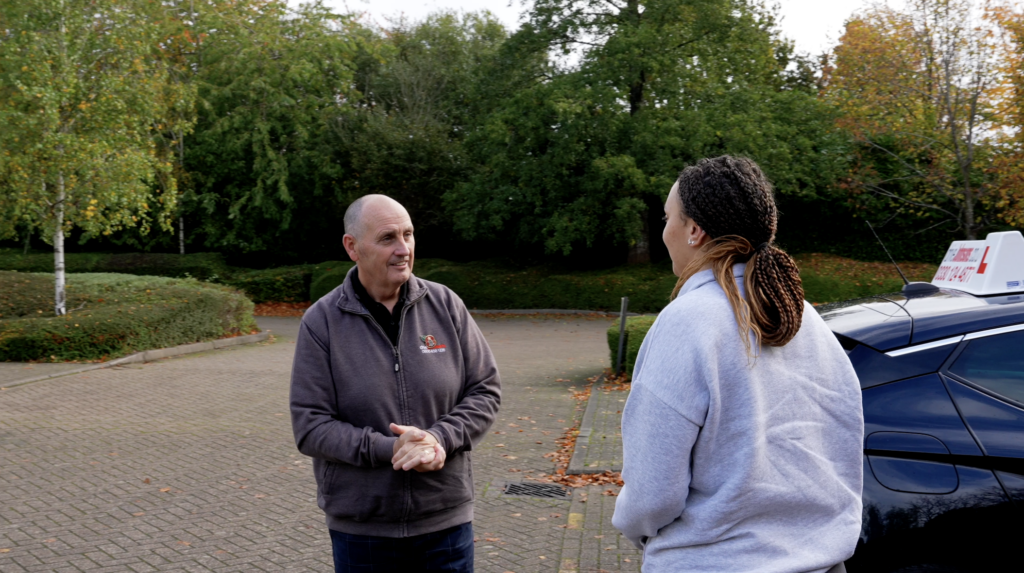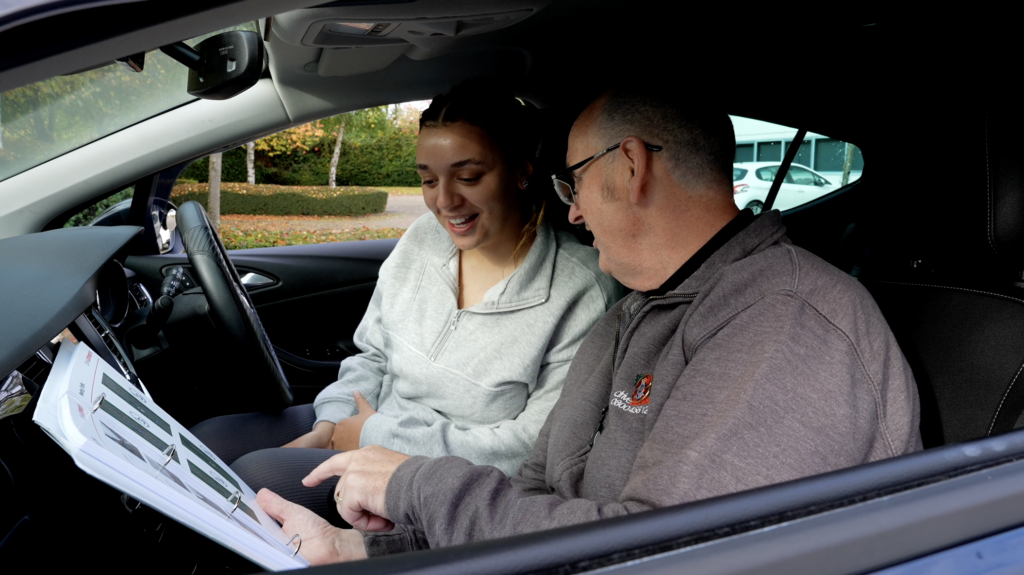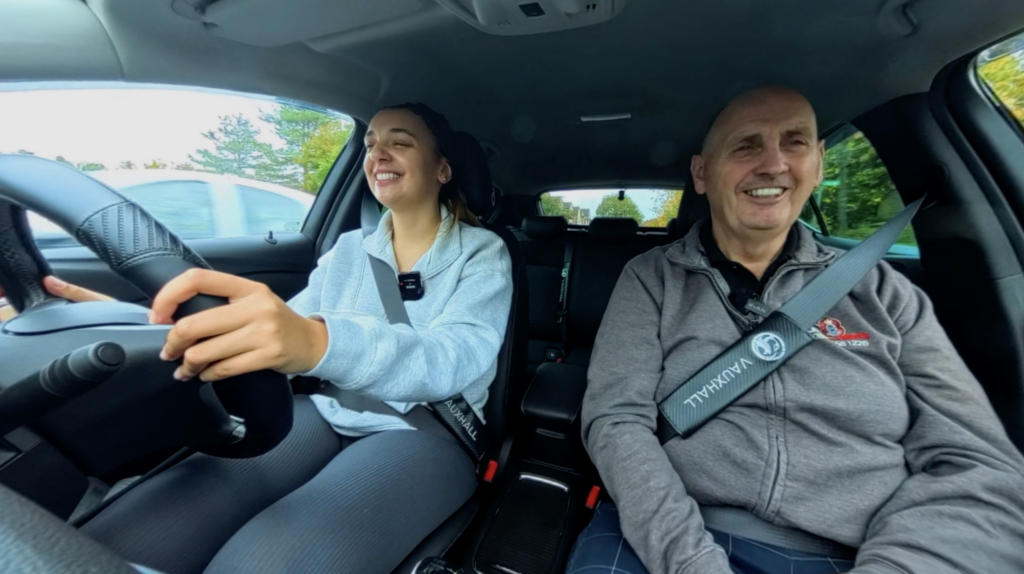How to manage your pupil’s driving test expectations
As of 8th April 2025, the DVSA introduced new terms regarding the cancellation notice for learner driving tests. It has changed from 3 working days to 10 working days notice.
The reason for changing the notice to cancel to 10 days was to reduce wasted driving test slots.
Special circumstances to cancel at short notice
Learners will still be able to apply for a refund if they need to change or cancel their test for the following reasons:
- An illness or injury that means you cannot take your test
- Suffered a bereavement
- To take an exam at a school or college
- Had your driving licence stolen
Tips on how to manage your pupil and their driving test expectation
If you have been training your learner from the beginning then you should be managing and updating them on their progress regularly. That means you are doing the following:
- Filling in a reflective log or record of progress after each lesson.
- Every 3-4 weeks, perhaps give them an update on what their current level is and how many lessons they may need to be test-ready.
- 2-3 months away from their driving test, introduce mini mock tests. These can be just 10 minutes long. If your pupil is getting 3-4 serious/dangerous faults in 10 minutes, then you can times this by at least 3 to give them an indication of how many serious/dangerous faults they would get on their driving test if it was tomorrow. Be sure to record their serious/dangerous faults, so they can see in black and white what they are doing. You and the pupil can also look back at previous performances to see if they are improving over time.
- 4-6 weeks away from their driving test, you should be at a stage where they can complete a mock test and they should only be doing 4 serious/dangerous faults or less. If they exceed this amount, then consider going back to mini mock tests and explain why it’s not beneficial for silence over 40 minutes if they are making so many serious/dangerous faults. You should also begin to warn them that if they don’t improve soon, they should consider moving their test back or increasing their lessons if you think that would make a difference and get them test-ready in time.
Managing and explaining that your pupil is behind schedule and may not be test-ready in time
As you know, some learners will always trust your judgement and others may question it. You shouldn’t be offended if they question your judgement. As an instructor, it is important to be likeable and find ways to help your learners understand why they are not test-ready. Rather than saying, “You need to put your test back as you’re not ready. You will fail.”, help them to understand your thinking by doing the following:
- Discuss their progress with them using their reflective log and explain whilst they are still in the red and amber zones for most of the general driving topics, it doesn’t make sense to move on to a mini mock test or actual mock tests.
- As your learner starts to grasp most areas of the driving syllabus, begin to show them the tricky areas within their chosen test centre. Create a tricky areas tick sheet and record which ones they have mastered and which ones still need practice. This is a great way of managing their expectations, as they should know how to drive over at least 80% of your tricky test route areas before they can even begin to do a mock test. You can view our tricky test route areas sheet here for Bletchley test centre.
- Explain to your pupil that if they make 3-4 serious/dangerous faults in the first test minutes of their driving test, the examiner will most likely abort the driving test and walk back to the test centre, leaving them in the car. Many learners don’t know this is what happens if their driving standard is too unsafe.
- Explain to your pupil that the examiner’s job is to observe their driving; they aren’t allowed to teach you or give you advice. They will only intervene if it’s in the interest of public safety. Their job isn’t to protect the driving school from hitting kerbs or hitting car wing mirrors off etc. If this is happening, they will simply abort the driving test, especially if these faults occur early on in the driving test.
- Never say to your pupil that you can’t take them for their test because you will risk losing your job as they are not test-ready. Instead say something along the lines of: “I have a moral obligation to the DVSA to only take pupils to their driving test who I think are test-ready. Morally I shouldn’t take a pupil to test if I feel I will be putting the examiner at risk. If the examiner aborts the test because your driving is too unsafe, he or she is basically saying my judgement is completely wrong. They will most likely have a chat with me and make me aware of the standards expected for the driving test.”
How much notice should you give your pupils that they are not test-ready?
The minimum notice we ask driveJohnson’s instructors to give is 14 days’ notice as per our terms and conditions. The DVSA requires 10 days’ working notice. Ideally, you shouldn’t be leaving it this late to tell your pupils they are not test-ready unless they have only been with you 1-2 weeks prior. If you are monitoring, recording and managing your pupil’s progress and expectations every lesson then there should be no reason why you need to leave it close to the 14-day cut-off, unless you and the pupil have agreed it’s okay to do this and they accept your final answer.
This scenario might happen if your pupil has gone back to university, for example, and you haven’t seen them for months. They have called you up and said “I’ve got my test in 2-3 weeks’ time. Can you help?”
Assuming you have the availability to help, your first answer should be, “Yes, I can help, but I must make you aware that I haven’t seen you drive for a long time. I’m happy to do a 2-hour assessment and then, at the end of the lesson, I can let you know how many hours you need and if I think I can get you ready.”
Let’s say that after the assessment you think they need 12 hours of training but the pupil only wants another 4 hours before their driving test. In this scenario, you are best to say something along the lines of: “I’m very sorry, I think you need 12 hours and you only want to do 4 hours. In my professional opinion, I can’t get you ready in time. You are very welcome to try another driving instructor and get a second opinion, but I wouldn’t be doing you justice if I did another 4 hours with you and then said I can’t take you for your driving test as you are still not ready. I don’t want to do that to you, it’s unfair and will leave you very little time to find another instructor. You may find an instructor who thinks they could get you ready in just 4 hours, but I’m sorry, I can’t help you.”
If the pupil is only willing to do 4 hours, it’s not worth the risk of doing those 4 hours if you know the answer is going to be the same. You will leave them with no time to find another instructor and they may become very unhappy with you. In this instance, it’s in everyone’s interests to be honest with them sooner rather than later.
Accepting new pupils with a test coming up – what to do!
Don’t be put off taking on a new pupil with a test in 3-4 weeks time. However, do be transparent with them straight away by phone that the first lesson will be an assessment of their driving and that, at the end of the lesson, you will discuss with them their current level of driving and whether you think you can get them test-ready in time, based on the number of hours they are willing to do each week leading up to the test.
The key to getting this right and not ending in dissatisfaction from the pupil is to be honest early on. If you don’t think you can get them ready, then it’s best to tell them after the first lesson and give them their options:
A) Put their test back.
B) Increase their lessons and you can reassess in 1 week to see how quickly they can respond to your feedback and teaching.
C) Offer them 1 more session to see how they improve as often the first lesson is them getting used to you and your car.
Never tell your pupil to have lots more lessons if in your mind you simply think they still won’t be ready in time. This will end in a lot of upset from the learner and they will feel like they have been financially fleeced by you.
What if you don’t know if they will be test-ready?
It’s not uncommon to have the first assessment lesson with a new pupil with a test coming up, but you are still unsure if you can get them ready. This usually happens when the pupil has previously been learning in a manual diesel car and your car is a manual petrol.
Tell-tale signs your pupil won’t be ready in time 4-6 weeks out from their driving test
- If they are still stalling regularly.
- If they are selecting the wrong gear to pull away or putting it in the wrong gear inconsistently.
- If they are still drifting towards the kerb or too far away from the kerb and they rely on your prompt to adjust their driving position.
- If their observations are poor approaching junctions and they regularly need your help in judging traffic.
- If their lane positioning is poor on roundabouts.
- If they are very heavy-footed with the brake pedal and can’t stop smoothly consistently.
- If their knowledge of the local test route area is poor and they don’t know 80% of the area well, i.e. if you have to prompt them on which lane they need for a double roundabout; they need your help on complex junctions or they are just very forgetful; you have shown them the areas but they still need your guidance to do the tricky areas safely.
Should you take a new pupil on with a test in just a few days’ time?
If you are new to the industry, then this may not be a good idea until you have had lots of experience taking pupils for their driving test.
Pupils who approach you for lessons with a test in just a few days times can sometimes be test-ready, but most of the time they don’t have an instructor for a reason – they aren’t ready. You will hear stories from the pupil that their instructor is unwell or has gone on holiday, etc. This may be true but it may be the case they have been told they are not test-ready. Of course, this is not always the case and more experienced instructors may choose to take them on for an assessment lesson to decide if they are test-ready.
If you choose to take a pupil on at such short notice, remember your obligation to the DVSA, to only bring pupils to test if you think they are ready. Please do not take learners for their driving test if they are not ready and you are just doing it to be paid. Gaining a good reputation at your local test centre takes a long time; losing your reputation at your local test centre can happen very quickly, especially if you are new to the industry.
Don’t be afraid of your pupils failing – approximately 50% of tests end in failure every day
The most important thing about a pupil failing a test is, was it a respectable fail?
A respectable fail is when your pupil may fail for 1-2 serious/dangerous faults and 6-10 driving faults. This isn’t ideal by any means, but it also happens to your pupils who you could bet £1000 on that they would pass. The longer you are an instructor, the more you will see some of your best pupils fail and the pupils you felt were borderline ready go on and pass. It helps to sit in the back of your pupils’ tests to see how they perform under real test conditions. You can learn so much from sitting in the back of a driving test.
Neil Bates, one of our driving instructors in London, was struggling to understand why his pass rate was going down until he did this. He said, “I asked to sit in a few of my pupils’ tests and suddenly I realised where I had been going wrong. If I hadn’t seen it for myself, it wouldn’t have crossed my mind what needed sorting. And it was simple things too. I’ve made some changes and now my pass rate is much higher.”
The other thing to look out for is patterns. After you have had a round of 5 test failures, you begin to assess and look for noticeable patterns. You may not realise your own weaknesses in your teaching until you reflect on the driver fault patterns of your pupils. If you see a common fault for clutch, it may be you are not monitoring your pupil enough with their coasting, for example. Sitting in the back of your pupil’s test is by far the best way to then analyse your pupil’s faults after the test. If your pupil doesn’t want you to sit in on their driving test, then be sure to listen to the examiner’s feedback at the end. Again, you will require your pupils permission to hear the feedback at the end.
You have told your pupil you can’t take them for their test and they say, “I just want to give it a go. I don’t mind/care if I fail.”
This does happen a lot, especially if you are telling them at short notice that you can’t take them. This is why it’s best to give them as much notice as possible and keep updating them each lesson as they get closer to their test if they are improving quickly enough to be test-ready.
Remember, if you have to tell a pupil who you have been training from the beginning that they are not test-ready at short notice then your judgement somewhere has been wrong. You should rarely and ideally never be telling a pupil you have been teaching for months that they aren’t ready 1-2 days before their driving test. The pupil is going to be very emotional at this stage and not think rationally.
Please avoid getting yourself into this situation. If you need extra advice to avoid this please call the driveJohnson’s office and you can speak to a senior instructor trainer for extra help and guidance on how to prevent this.
Can pupils go for their test in their own car or hire car?
Yes, they can use their own car for their driving test, as long as the car is insured correctly and they have an accompanying adult who has a UK licence and meets the age requirements and insurance requirements. Learners should not turn up to the test centre in a car on their own.
Summary and last word
It is very hard to please all of your pupils, and even more so when they have a driving test coming up and, for whatever reason, they are not test-ready.
It can be hard telling them they are not ready. You may be scared of telling them and that’s normal. However, it will get harder and more emotional letting them know they are not test-ready the closer they get to their driving test.
Keep them updated throughout their lessons, especially if they are asking about booking the test. Please remember if the waiting times are long in their test area, you will most likely need to tell them to book their test in anticipation that they will be ready for the test. If you are doing this, be sure to give them a range to book within. For example, if it’s the 15th of April now, you may ask them to book their test for any date after the 15th of July. If you just say get your test booked, don’t be surprised if they come back with a test in 2 weeks’ time.









